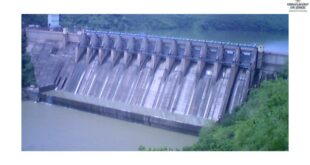For 2018, the monsoon is past the crucial half-way mark. As of August 9, the seasonal rain, which decides the fate/extent of the kharif crop acreage, has run up a deficit of 10%. But it is not so much the deficit figure as the spatial and temporal spread (across space and time) of rain, that is important from the view point of monsoon performance. And, here, the 2018 monsoon has delivered reasonably well, according to top officials of the India Meteorological Department (IMD), who have stuck to the original forecast of a ‘normal’ season (96-104% of the long-period average) this year. This is despite alarmist call-outs from certain quarters about it likely delivering less than par during August, the second rainiest of the four monsoon months. This was attributed to creeping fears about the dreaded ‘break monsoon’ phenomenon — an inevitable phase when rains shut out over large parts of the country for a prolonged period. It has a tendency to rear its ugly head in August.
Monsoon 2018 has had a typical roller coaster ride during June and July, the first two months. They set the tone for the four-month season, in that June basically witnesses the Arabian Sea arm of the monsoon progress steadily along the west coast and into central India, while the Bay of Bengal arm lunges in from the east to meet with it. The combined entity takes the Indian monsoon, among the largest and most spectacular on the face of the planet, into northwest India. July is also the rainiest of all four months and must also ensure the spatial and temporal spread. But after June delivered less than optimal with a 5% deficit, July disappointed, yielding only 94% against the IMD’s forecast of 101%. This was mainly because of a lean patch from June 12 to 27, after which the monsoon revived. But it ran into minor trouble in July as well. Otherwise, the spread of rain has been mostly on par, despite deficits in east India, northeastern India, Saurashtra and Kutch, parts of Gujarat, and a few Met subdivisions in the south peninsula. A successful monsoon also comes with the collateral damage in loss of lives, flooding, landslides, and massive destruction to property and infrastructure. This year has not been an exception, which is a telling comment on our state of disaster preparedness. The IMD has already forecast a higher rainfall during August (96% of the long period average). An evolving positive phase of the Indian Ocean Dipole (IOD, the equivalent in the Indian Ocean, of El Nino-La Nina in the far-off equatorial Pacific) could boost the monsoon further, as has been proved in the past. What is needed is an early warning system, backed up with men, equipment and material, to correctly anticipate and effectively deal with monsoon-triggered disasters.
Source : https://www.thehindu.com/todays-paper/tp-national/the-monsoon-and-its-march-so-far/article24668451.ece
Check Also
Zoning of flood plains
Why in news: Punjab has been reeling under floods for well over a month now and …
 Chinmaya IAS Academy – Current Affairs Chinmaya IAS Academy – Current Affairs
Chinmaya IAS Academy – Current Affairs Chinmaya IAS Academy – Current Affairs


